 W
WVictor Adamson was a New Zealand director, producer, screenwriter, and actor most famous for directing and starring in B and Z grade westerns in the early days of motion pictures. Adamson often used pseudonyms to credit himself, most often using the name Denver Dixon. His son, Al Adamson, would later follow his father in producing B movies during the 1960s and 1970s.
 W
WRobert Burgess Aldrich was an American film director, producer, and screenwriter. His notable credits include Vera Cruz (1954), Kiss Me Deadly (1955), The Big Knife (1955), Autumn Leaves (1956), Attack (1956), What Ever Happened to Baby Jane? (1962), Hush...Hush, Sweet Charlotte (1964), The Flight of the Phoenix (1965), The Dirty Dozen (1967) and The Longest Yard (1974).
 W
WRobert Bernard Altman was an American film director, screenwriter, and producer. Altman is known as a five-time nominee of the Academy Award for Best Director and an enduring figure from the New Hollywood era, comparable to such directors as Martin Scorsese, Woody Allen, Sidney Lumet and David Lynch. Altman was considered a "maverick" in making films with a highly naturalistic but stylized and satirical aesthetic, unlike most Hollywood films. He is consistently ranked as one of the greatest and most influential filmmakers in American cinema.
 W
WGilbert M. "Broncho Billy" Anderson was an American actor, writer, film director, and film producer, who is best known as the first star of the Western film genre. He was a founder and star for Essanay studios. In 1958, he received a special Academy Award for being a pioneer of the movie industry.
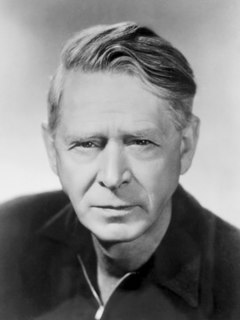 W
WFord Beebe was a screenwriter and director. He entered the film business as a writer around 1916 and over the next 60 years wrote and/or directed almost 200 films.
 W
WHarry Hale Buckwalter, sometimes credited as Harry H. Buckwalter or Henry H. Buckwalter, was an American photographer, journalist, photojournalist, and silent film director and producer.
 W
WKevin Michael Costner is an American actor, film director, and producer. He has received two Academy Awards, two Golden Globe Awards, a Primetime Emmy Award, and two Screen Actors Guild Awards.
 W
WMichael Curtiz was a Hungarian-born American film director, recognized as one of the most prolific directors in history. He directed classic films from the silent era and numerous others during Hollywood's Golden Age, when the studio system was prevalent.
 W
WDelmer Lawrence Daves was an American screenwriter, director, producer, and actor.
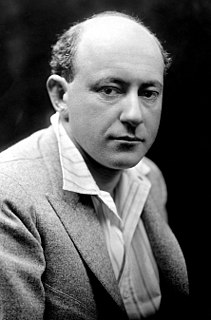 W
WCecil Blount DeMille was an American film director and producer. Between 1914 and 1958, he made 70 features, both silent and sound films. He is acknowledged as a founding father of the American cinema and the most commercially successful producer-director in film history. His films were distinguished by their epic scale and by his cinematic showmanship. His silent films included social dramas, comedies, Westerns, farces, morality plays, and historical pageants.
 W
WEndre Antal Miksa DeToth, better known as Andre DeToth, was a Hungarian-American film director, born and raised in Makó, Csanád County, Austria-Hungary. He directed the 3D film House of Wax, despite being unable to see in 3D himself, having lost an eye at an early age. Upon naturalization as a United States citizen in 1945, he took Endre Antal Miksa DeToth as his legal name.
 W
WEdward Dmytryk was a Canadian-born American film director. He was known for his 1940s noir films and received an Oscar nomination for Best Director for Crossfire (1947). In 1947, he was named as one of the Hollywood Ten, a group of blacklisted film industry professionals who refused to testify to the House Un-American Activities Committee (HUAC) in their investigations during the McCarthy-era 'Red scare'. They all served time in prison for contempt of Congress. In 1951, however, Dmytryk did testify to HUAC and rehabilitated his career. First hired again by independent producer Stanley Kramer in 1952, Dmytryk is likely best known for directing The Caine Mutiny (1954), a critical and commercial success. The second-highest-grossing film of the year, it was nominated for Best Picture and several other awards at the 1955 Oscars. Dmytryk was nominated for a Directors Guild Award for Outstanding Directorial Achievement in Motion Pictures.
 W
WAllan Dwan was a pioneering Canadian-born American motion picture director, producer, and screenwriter.
 W
WClinton Eastwood Jr. is an American actor, film director, composer, and producer. After achieving success in the Western TV series Rawhide, he rose to international fame with his role as the "Man with No Name" in Italian filmmaker Sergio Leone's Dollars Trilogy of Spaghetti Westerns during the mid-1960s, and as antihero cop Harry Callahan in the five Dirty Harry films throughout the 1970s and 1980s. These roles, among others, have made Eastwood an enduring cultural icon of masculinity. His accolades include four Academy Awards, four Golden Globe Awards, three César Awards, and an AFI Life Achievement Award.
 W
WJohn Feeney, known professionally as John Ford, was an American film director and naval officer. He is renowned both for Westerns such as Stagecoach (1939), The Searchers (1956), and The Man Who Shot Liberty Valance (1962), as well as adaptations of classic 20th-century American novels such as The Grapes of Wrath (1940). He was the recipient of five Academy Awards including a record four wins for Best Director.
 W
WSamuel Michael Fuller was an American screenwriter, novelist, and film director known for low-budget, understated genre movies with controversial themes, often made outside the conventional studio system. Fuller wrote his first screenplay for Hats Off in 1936, and made his directorial debut with the Western I Shot Jesse James (1949). He would continue to direct several other Westerns and war thrillers throughout the 1950s.
 W
WDavid Wark Griffith was an American film director. Widely considered as the most important filmmaker of his generation, he pioneered financing of the feature-length movie.
 W
WWilliam Surrey Hart was an American silent film actor, screenwriter, director and producer. He is remembered as a foremost Western star of the silent era who "imbued all of his characters with honor and integrity." During the late 1910s and early 1920s, he was one of the most consistently popular movie stars, frequently ranking high among male actors in popularity contests held by movie fan magazines.
 W
WHenry Hathaway was an American film director and producer. He is best known as a director of Westerns, especially starring Randolph Scott and John Wayne. He directed Gary Cooper in seven films.
 W
WHoward Winchester Hawks was an American film director, producer and screenwriter of the classic Hollywood era. Critic Leonard Maltin called him "the greatest American director who is not a household name."
 W
WMonte Hellman is an American film director, producer, writer, and editor. Hellman began his career as an editor's apprentice at ABC TV, and made his directorial debut with the horror film Beast from Haunted Cave (1959), produced by Roger Corman.
 W
WWalter Hill is an American film director, screenwriter, and producer. He is widely known for his action films and revival of the Western genre. He has directed such films as The Warriors, Hard Times, The Driver, Southern Comfort, 48 Hrs. and its sequel Another 48 Hrs., Red Heat, Last Man Standing, Undisputed, and Bullet to the Head, as well as writing the screenplay for the Jim Thompson crime drama The Getaway starring Steve McQueen and directed by Sam Peckinpah. He has also directed several episodes of television series such as Tales from the Crypt and Deadwood and produced the Alien films.
 W
WJohn Marcellus Huston was an American film director, screenwriter, actor, and visual artist. He travelled widely, settling at various times in France, Mexico, and Ireland. Huston was a citizen of the United States by birth but renounced U.S. citizenship to become an Irish citizen and resident in 1964. He later returned to the United States, where he lived the rest of his life. He wrote the screenplays for most of the 37 feature films he directed, many of which are today considered classics: The Maltese Falcon (1941), The Treasure of the Sierra Madre (1948), The Asphalt Jungle (1950), The African Queen (1951), The Misfits (1961), Fat City (1972), The Man Who Would Be King (1975) and Prizzi's Honor (1985).
 W
WJasper Joseph Inman Kane was an American film director, film producer, film editor and screenwriter. He is best known for his extensive directorship and focus on Western films.
 W
WLawrence Edward Kasdan is an American director, screenwriter, and producer. He is the co-writer of the Star Wars films The Empire Strikes Back (1980), Return of the Jedi (1983), The Force Awakens (2015), and Solo: A Star Wars Story (2018). Kasdan also co-wrote the Indiana Jones film Raiders of the Lost Ark (1981) and is the writer-director of Body Heat (1981), The Big Chill (1983), and The Accidental Tourist (1988). Kasdan is known for updating old Hollywood genres—film noir, science-fiction, westerns—in a classical dramatic style with quick-witted dialogue, but dealing with contemporary social themes. As a director, Kasdan has made various personal films that examine characters and generations.
 W
WHenry King was an American actor and film director. Widely considered as one of the finest and most successful filmmakers of his era, King was nominated for two Academy Awards for Best Director, and directed seven films nominated for the Academy Award for Best Picture.
 W
WFriedrich Christian Anton "Fritz" Lang was an Austrian-German-American filmmaker, screenwriter, and occasional film producer and actor. One of the best-known émigrés from Germany's school of Expressionism, he was dubbed the "Master of Darkness" by the British Film Institute.
 W
WJoseph H. Lewis was an American B-movie film director whose stylish flourishes came to be appreciated by auteur theory-espousing film critics in the years following his retirement in 1966. In a 30-year directorial career, he helmed numerous low-budget westerns, action pictures and thrillers and is remembered for original mysteries My Name Is Julia Ross (1945) and So Dark the Night (1946) as well as his most-highly regarded feature, 1950's Gun Crazy, which spotlighted a desperate young couple who embark on a deadly crime spree.
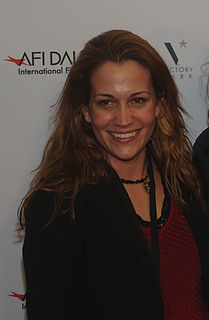 W
WSummer-Joy "SJ" Main Muñoz is a director, writer and producer. Main Muñoz is primarily known for directing and producing award-winning short films often of the Western genre or featuring Latino themes.
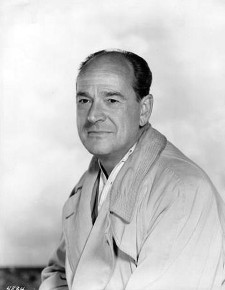 W
WAnthony Mann was an American film director and stage actor, best remembered for his work in the film noir and Westerns genres. As a director, he often collaborated with the cinematographer John Alton. He directed films for a variety of production companies, from RKO to MGM, and worked with many major stars of the era. He made several Westerns with James Stewart, such as Winchester '73 (1950), and he was the director of the medieval epic El Cid (1961), working with Charlton Heston and Sophia Loren. He also directed the big-budget film Cimarron (1960), which starred Glenn Ford and Maria Schell.
 W
WGeorge E. Marshall was an American actor, screenwriter, producer, film and television director, active through the first six decades of film history.
 W
WDavid Samuel Peckinpah was an American film director and screenwriter who achieved prominence following the release of the Western epic The Wild Bunch (1969). He was known for the visually innovative and explicit depiction of action and violence as well as his revisionist approach to the Western genre.
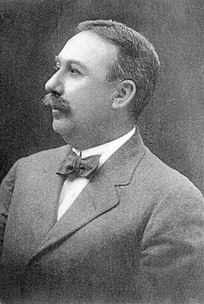 W
WEdwin Stanton Porter was an American film pioneer, most famous as a producer, director, studio manager and cinematographer with the Edison Manufacturing Company and the Famous Players Film Company. Of over 250 films created by Porter, his most important include Jack and the Beanstalk (1902), Life of an American Fireman (1903), The Great Train Robbery (1903), The Kleptomaniac (1905), Life of a Cowboy (1906), Rescued from an Eagle's Nest (1908), and The Prisoner of Zenda (1913).
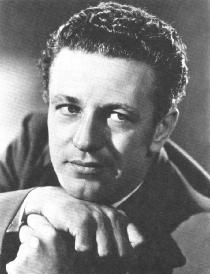 W
WNicholas Ray was an American film director best known for the 1955 film Rebel Without a Cause.
 W
WWesley Ruggles was an American film director.
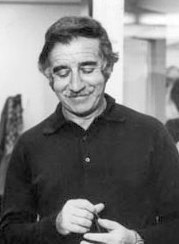 W
WDonald Siegel was an American film and television director and producer.
 W
WGeorge Cooper Stevens was an American film director, producer, screenwriter and cinematographer.
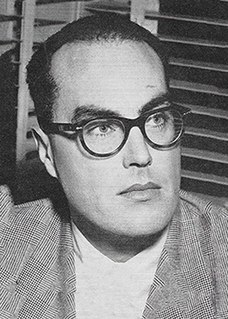 W
WJohn Eliot Sturges was an American film director. His films include Bad Day at Black Rock (1955), Gunfight at the O.K. Corral (1957), The Magnificent Seven (1960), The Great Escape (1963), and Ice Station Zebra (1968). In 2013, The Magnificent Seven was selected for preservation in the United States National Film Registry by the Library of Congress as being "culturally, historically, or aesthetically significant". Although both he and fellow director Preston Sturges were from the Chicago area and shared the same last name, they had no known close relation to each other.
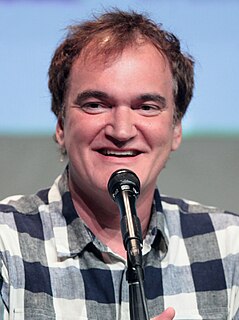 W
WQuentin Jerome Tarantino is an American film director, screenwriter, producer, and actor. His films are characterized by nonlinear storylines, dark humor, aestheticization of violence, extended scenes of dialogue, ensemble casts, references to popular culture and a wide variety of other films, eclectic soundtracks primarily containing songs and score pieces from the 1960s to the 1980s, alternate history, and features of neo-noir film.
 W
WKing Wallis Vidor was an American film director, film producer, and screenwriter whose 67-year film-making career successfully spanned the silent and sound eras. His works are distinguished by a vivid, humane, and sympathetic depiction of contemporary social issues. Considered an auteur director, Vidor approached multiple genres and allowed the subject matter to determine the style, often pressing the limits of movie-making conventions.
 W
WRaoul A. Walsh was an American film director, actor, founding member of the Academy of Motion Picture Arts and Sciences (AMPAS), and the brother of silent screen actor George Walsh. He was known for portraying John Wilkes Booth in the silent classic The Birth of a Nation (1915) and for directing such films as The Big Trail (1930), starring John Wayne, High Sierra (1941), starring Ida Lupino and Humphrey Bogart, and White Heat (1949), starring James Cagney and Edmond O'Brien. He directed his last film in 1964.
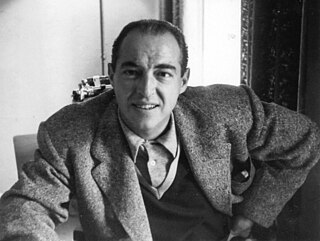 W
WCharles Marquis Warren was an American motion picture and television writer, producer, and director who specialized in Westerns. Among his notable career achievements were his involvement in creating the television series Rawhide and his work in adapting the radio series Gunsmoke for television.
 W
WMarion Robert Morrison, known professionally as John Wayne and nicknamed The Duke, was an American actor and filmmaker who became a popular icon through his starring roles in Western films. His career spanned from the silent era of the 1920s, through the Golden Age of Hollywood and eventually American New Wave, appearing in a total of 179 film and television productions. He was among the top box office draws for three decades, and appeared with many important Hollywood stars of his era.
 W
WWilliam Augustus Wellman was an American film director known for his work in crime, adventure, and action genre films, often focusing on aviation themes, a particular passion. He also directed several well-regarded satirical comedies. Beginning his film career as an actor, he went on to direct over 80 films, at times co-credited as producer and consultant. In 1927, Wellman directed Wings, which became the first film to win an Academy Award for Best Picture at the 1st Academy Awards ceremony.
 W
WWilliam Wyler was a Swiss-German American film director and producer. Notable works include Mrs. Miniver (1942), The Best Years of Our Lives (1946), and Ben-Hur (1959), all of which won him the Academy Awards for Best Director, and Best Picture, making him the only director of three Best Picture winners. Wyler received his first Oscar nomination for directing Dodsworth in 1936, starring Walter Huston, Ruth Chatterton and Mary Astor, "sparking a 20-year run of almost unbroken greatness."
 W
WAlfred Zinnemann was an Austrian-born American film director. He won four Academy Awards for directing films in various genres, including thrillers, westerns, film noir and play adaptations. He made 25 feature films during his 50-year career.